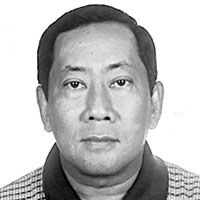Rename Philippine Insurrection to Fil-Am war

Twenty years ago when I visited the famous Iwo Jima, a monument of World War II in Arlington, Virginia that shows the statues of American soldiers in Mt. Suribachi raising the American Flag, I went around and saw what was written around its base. For a World War II buff I thought that all the wars that America fought during World War II would be written at the base of the Statue. However, one war was named, “Philippine Insurrection” and I felt that it was wrongly named because the war that our Filipino patriots fought with Gen. Emilio Aguinaldo, Antonio Luna was not an insurrection by Filipinos. Rather it was a war that our Filipino patriots earlier fought with the Americans supposedly against our Spanish colonizers. But how things suddenly changed in those days.
But then who are we to correct American history written by victorious American authors? In my years of studying Philippine history, we learned that our Filipino-Spanish Revolutionary War was suddenly changed into the Filipino-American War. But then even Filipinos at that time didn’t know what to call what was happening at the turn of the century when we thought that America came to fight the Spaniards and not the Filipinos. But we were wrong… the Spanish-American War ended, with the United States of America belatedly realizing that it too had colonial ambitions in Southeast Asia and its war against Spain was easily won and soon, America had newly acquired territories in Asia.
So in the end, the Filipino revolutionaries fighting the Spanish Guardia Civil were now fighting American troops, many of whom were veterans of the Civil War and the Indian Wars. One famous American officer, who still has a name in the City of Manila, was Maj. Gen. Henry W. Lawton who commanded the 1st Division of the 8th Army Corps and became the highest American officer killed in action during the Philippine-American War. Yes, Plaza Lawton was named after him. He was the first American General killed outside North America. Thus our Filipino American war became known to the Americans as the Philippine Insurrection.
On Sept. 28, 1901 US soldiers from Company C of the 9th US Infantry Regiment were having breakfast on the church yard when Filipino patriots rang the church bells of Balangiga to signify the attack on US soldiers. Killed were 48 soldiers and 22 wounded the 78 men of that regiment. The Filipino patriots captured a hundred rifles and 25,000 rounds of ammunition. Some 25 Filipinos were killed in that attack.
Upon hearing of this disaster, US General Jacob J. Smith ordered the USS New York to go to Samar and turn it into a “howling wilderness.” He ordered that Filipino male above ten years of age who are capable of bearing arms be shot. Soon, the US military established concentration camps in Samar and ordered all civilian populace to move into the concentration camps or risk being shot and killed. We learned that because of what happened in Samar, the US government ordered an investigation and court-martialed General Smith, who was convicted, but the sentence was not served.
But the US military left Samar with their booty, the bells of Balangiga. Two of the bells are now in a US military base in Cheyenne, Wyoming while one is displayed at a museum in South Korea. Since America gave the Philippines its independence on July 4, 1946, efforts to bring back the Bells of Balangiga have been raised, but totally ignored.
Over the weekend, Presidential spokesman Harry Roque Jr. announced that Malacañang Palace has been informed of the US defense department’s announcement that it intends to return the bells to the Philippines. Roque said, “We welcome this development as we look forward to continue working with the United States government in paving the way for the return of the bells to the Philippines.” Unfortunately, no dates have been set on when the bells would be returned to the Philippines.
I recall that during the time of Pres. Fidel V. Ramos, he requested the US to give back the Balangiga Bells but the request was ignored by the US. Things became serious during the second State of the Nation Address of Pres. Rodrigo Duterte who called on the US to return the Balangiga bells, saying it was painful for Filipinos to see items that form part of their national heritage taken away from them. This time, the US embassy announced over the weekend that the US defense department is willing to return the bells to the Philippines. The agency has informed the US Congress of its decision but no specific date has been set for the return of the bells perhaps because the US Congress is against the return of the bells.
* * *
Email: [email protected]
- Latest
- Trending


























